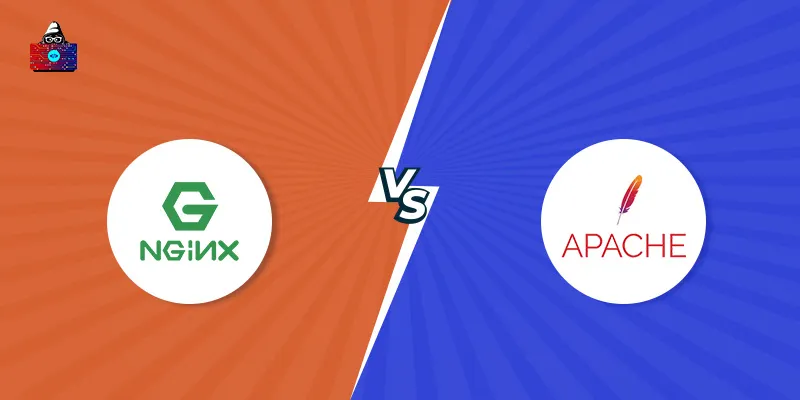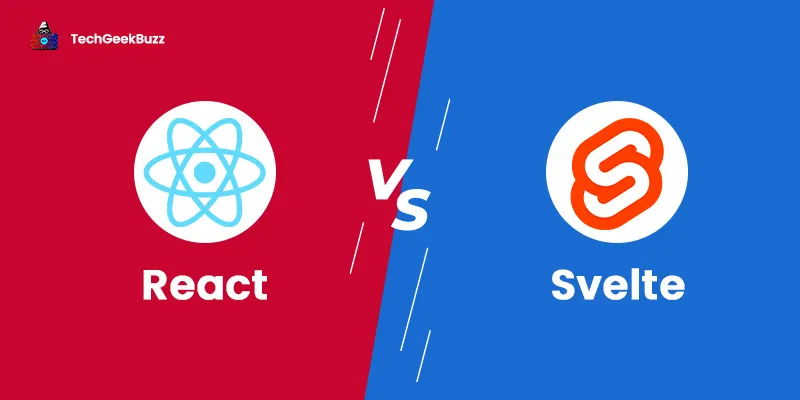The internet has made it possible for us to retrieve any information we want within a few seconds. We just need to query the internet about what we require, and it responds in a jiffy. All this is facilitated by a web server.
A web server is a software program that stores and delivers web content to users when requested. With multiple web servers available, Apache HTTP server and NGINX are the two extensively used open-source web servers.
Almost half of the websites today use these two web servers to provide web content to their users. Though both share a similar purpose of hosting and serving web content, they have a few dissimilarities between them.
This article primarily concentrates on highlighting key differences between NGINX and Apache HTTP Server. Also, you will get acquainted with what exactly a web server is and how it works. We will later provide a brief introduction to NGINX and Apache HTTP with their benefits and drawbacks.
What is a Web Server?
A web server is a combination of software and hardware that stores, processes, and delivers web content to the users. It uses the HTTP (Hypertext Transfer Protocol) protocol and other protocols to respond to clients’ requests on the World Wide Web (WWW). Some other protocols used by a web server are File Transfer Protocol (FTP) and Simple Mail File Transfer (SMTP).
As hardware, a web server is simply a computer that stores web server software and a website’s component files, like HTML documents, CSS sheets, images, and JavaScript files. This hardware is connected to the internet, and it facilitates data exchange with other connected devices.
On the other hand, a web server as software controls how the users access these hosted files. We generally use browsers to fetch any information that we want. After requesting a browser, it responds to us with a requested file or page from a web server. This process involves a series of actions that are as follows:
- When we specify a URL in the address bar of a browser, it then obtains the domain name’s IP address either by searching it in a cache or translating the URL through DNS.
- The browser then sends the HTTP request to a web server, requesting a specific file.
- The web server responds to the browser with the requested file via HTTP.
- If the webserver does not find the requested file, it responds to the browser with an error message.
What is Apache HTTP Server?
Apache HTTP Server or Apache is a free and open-source web server software. It is available under the Apache License 2.0 and is developed and maintained by the Apache Software Foundation. Apache HTTP Server is one of the four components of LAMP (Linux, Apache, MySQL, PHP), a web application stack.
The development of the Apache HTTP Server (“httpd”) began back in 1995, and it was the first web server to be used by 100+ million websites in 2009. Apache is a cross-platform web server software compatible with OpenVMS, Microsoft Windows, and Unix-like systems. It hosts web content, like audio and video, HTML pages, and PHP files. Due to Apache’s architectural flexibility, multi-platform support, and power compatibility, most server administrators use Apache over other web servers.
The architecture of Apache consists of a core and modules, where the core implements the basic functionality of a server. Also, the core implements many utility functions. Modules, on the other hand, refer to different functionalities that are executed upon receiving each request.
Benefits of Apache
- As it is open-source, anyone can use it for free.
- The presence of dynamic modules makes it more flexible.
- It is compatible with Microsoft Windows and Unix-like systems, like Linux, BSD, etc.
- Apache has a vast community of developers. Therefore, you can get support from these developers quickly.
Drawbacks of Apache
- Apache allows users to perform modifications in the configuration, which may result in a security issue.
- It offers poor performance on heavy traffic websites.
- It requires more RAM under a heavier load.
What is NGINX?
Nginx, also stylized as nginx, NginX, or NGINX, is another widely used free and open-source web server. It also serves as a load balancer, HTTP cache, reverse proxy , and mail proxy. Igor Sysoev created NGINX, and it was first released in 2004 under the 2-clause BSD license. It is fully compatible with Unix-like systems, such as BSD variants, Linux, AIX, and HP-UX, and offers limited support for Windows and macOS systems.
NGINX has an event-driven architecture, which significantly differs from Apache’s thread-per-connection architecture. Every work process in NGINX can handle thousands of HTTP connections concurrently. NGINX is lightweight and offers high performance.
Benefits of NGINX
- NGINX is a lightweight web server that requires less memory and fewer hardware resources.
- It is capable of handling more than 10,000 connections simultaneously with a low memory footprint.
- It offers better scalability and is excellent at handling static content.
Drawbacks of NGINX
- Users face difficulties in creating modules in NGINX as it does not have a function like the one in Apache called Apache Portable Runtime (APR) that facilitates module creation.
- It offers limited modules as compared to Apache.
NGINX vs Apache: A Head-to-Head Comparison
The below table highlights some major differences between NGINX and Apache.
| Parameters | Apache | NGINX |
| Simplicity | As Apache is a one-connection-per-process model, it is easy to develop. | As NGINX handles multiple connections concurrently, it has a sophisticated architecture. Therefore, it is more complex than Apache. |
| Operating system support | Apache completely supports Unix-like systems, such as BSD, Linux, etc., and is also fully compatible with Windows. | NGINX completely supports Unix-like systems but offers limited support for Windows. |
| Architecture | It handles multiple client requests using a multi-threaded or process-driven approach. | This web server follows a single-threaded or event-driven approach. It uses a single thread to process multiple client requests. |
| Usage | Apache is used as a web server. | NGINX serves as a web server and a reverse proxy server for several protocols, including UDP, TCP, SMTP, POP3, HTTPS, and HTTP. |
| Feature modules | It allows the loading and unloading of modules dynamically. | It becomes more complex to load and unload modules dynamically in NGINX. |
| Traffic handling | With heavy web traffic, Apache cannot handle multiple client requests simultaneously. | It can handle multiple concurrent connections effectively with heavy web traffic and limited hardware resources. |
| Static content | Upon receiving a new request, Apache creates a new thread. Therefore, it is relatively slower than NGINX in displaying static content. | NGINX consumes less memory and is 2.5 times faster in displaying static content than Apache. |
| Dynamic content | Apache can process dynamic content. | This web server cannot process dynamic content. |
Conclusion
Both Apache and NGINX provide high-quality performance and are the best in their own ways. Due to the event-driven architecture of NGINX, it is capable of handling heavy web traffic and processing static files efficiently. Therefore, developers prefer NGINX for web application development. NGINX outperforms Apache in terms of static content, and also it offers some advanced features, like media streaming and reverses proxying for non-HTTP protocols.
On the flip side, Apache is faster than Nginx when it comes to processing dynamic content and loading and unloading modules dynamically. Also, it is primarily used for shared hosting. On the other hand, NGINX is an ideal choice for use in VPS hosting and dedicated hosting.
People are also reading:





Leave a Comment on this Post